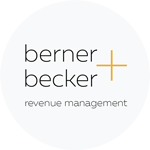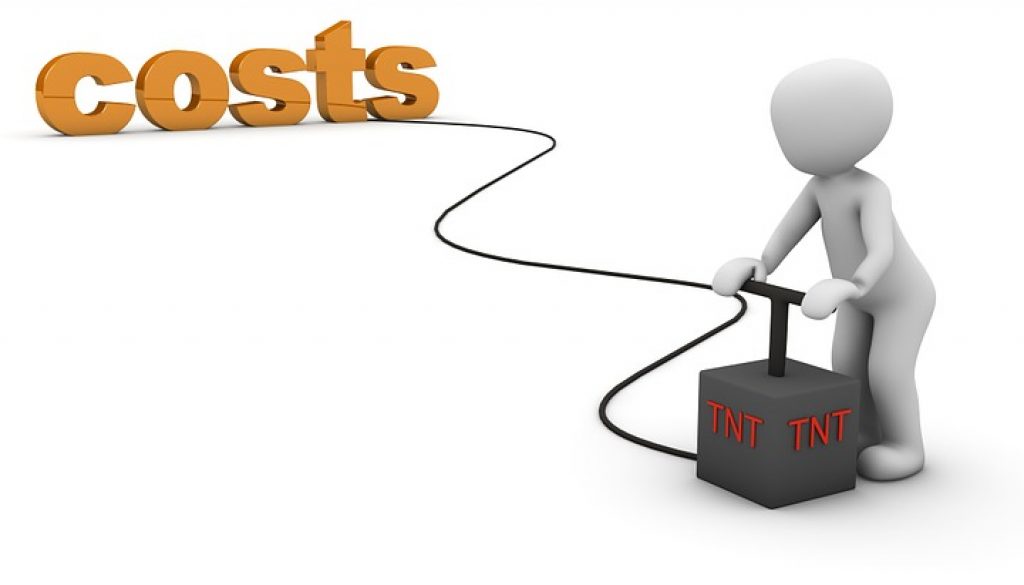The importance of measuring your distribution costs
In recent years, many articles on Revenue Management and Online Distribution have been written on topics that have either pushed for an increased number of channels and therefore exposure of the individual hotel or the optimization of commission costs per channel. Rarely has yielding or reducing the number of channels depending on demand been mentioned, even though I am sure that for many hoteliers in the last years the amount of Online Travel Agent Commission in their profit and loss statement has sky rocketed. The main reason for this is that the participation in different programs, offers, channels has always been “a must” to drive higher Revenue according to their account handlers at the respective Distribution Channels or Channel Managers.
But let’s start with the basics: Different authors suggested “the right channel” to be added to the definition of Revenue Management. This expansion of “the right channel” goes along with a highly debatable current topic of Revenue Management: the influence of Online Travel Agents (OTAs) commissions impacting hotels bottom lines. Usually the discussion now starts talking about direct vs. OTA bookings in the industry, but this is not what this article will be about.
In this article however, due to the ever-growing complexity and changing landscape of hotel distribution channels, I want to focus on how a hotel can best manage their distribution costs using the available distribution channels and give clear guideline of how to go about it. By this I would like to add an additional important fragment to the standard definition of revenue management: “at the right cost“.
Underemphasized points in measuring distribution costs
In my opinion, even though Hotel Revenue Management professionals are aware of the impact of distribution costs on bottom line results, the responsibility is rarely assigned to the revenue manager. When analysing the topic of distribution costs, I came up with several key challenges that are generally undervalued and need to be directly addressed on property:
Assess profitability for individual channels
Often several different channels exist with individual commission and cost agreements, the respective agreements are rarely filed on property nor does anyone remember signing them. Then, invoices received from the various channels are rarely assigned to the corresponding booking productions respectively. Normally, these are just directly passed on to the finance department.
Yield distribution channels
Individual channels would need to be regularly displaced against high demand dates, when the hotel can yield its business and should restrict the least profitable channels. The complexity of this displacement calculation taking into consideration not only revenues but also costs requires an experienced revenue manager or a Revenue Management System (RMS). Currently, only a few companies are actively yielding NET RevPAR in their RMS and even fewer are actively calculating NET RevPAR figures, thus accounting for distribution fees.
Measure one-time fees of Channel Managers and other fixed costs
Many system related fees are not directly accounted for in the Revenue Management Department, consequently the calculated fees per booking channel cannot be directly assessed and yielded correctly. Examples of potential fees charged at any point in time are:
- Setup fees and implementation costs of a channel manager (e.g. a two-way interface to the Property Management System)
- Costs per channel or per booking through the Channel Manager or Booking Engine
- GDS (Global Distribution System) pass-through fees
- Marketing costs (e.g. for Wholesale Agency bookings, SEM or SEO costs)
- Meta Search Costs and Costs-per-click
- Program participation costs and required upgrades / vouchers and discounts
- Employee costs entering bookings manually
- Loyalty and reward member costs charged internally
The impact on hotel operations
If a hotel’s distribution channels are not automatically interfaced to the Property Management System (PMS), the hotels operations team (Reservations or Front Office) will need to provide support and will loose important time that should be spent with guests in the process.
Since NET RevPAR calculations are highly debatable, and commission costs per booking are almost never accounted for, additional costs incurred for different channels need to be broken down further. Also, hotels should be aware of the depreciation of setup costs e.g. for individual channels and channel managers, so that moving to a new system, when fully depreciated, becomes more reasonable.
Distribution cost measurement by segment
In addition to the overall challenge of measuring distribution costs in any given hotel, adding different segments with changing costs structures and demand patterns increases the complexity of the overall topic. Under the assumption that any hotel is running on a high occupancy at least during some months per year (with lots of unconstrained demand), an attempt to yield different segments and distribution channels can lead to new sales and more restrictive distribution strategies for hotels that are actively attempting to improve their cost structures.
Amongst different topics and issues, due to the consolidation of segments and distribution channels when reporting and forecasting, several unprofitable segments can make it hard to assess even the low producing channels individually. Furthermore, different internal costs for loyalty programs, breakfast splits and OTA commission agreements amongst global chains makes a direct comparison very difficult.
To manage this, hotels should assess their profitability per channel and segment on the most detailed scale possible (e.g. monthly or daily). This will facilitate new sales strategies per channel, in contrast to increasing commissions or yielding channels based upon their associated costs. When done correctly and supported by the right reporting, yielding the right channels during peak seasons will lead to commission cost savings, which could be as high as 10-15% per booking. As a result, your property potentially outperforms your competitors in GOP growth, even in times of limited revenue growths in the market.
Take control of your distribution
To gain control of your distribution costs, there are several steps a hotel can do to assess the commission costs per distribution channel.
Make sure you have the right market segmentation in place
One of the crucial steps is to assess your business mix and put a segmentation in place. Even though the analysis of distribution costs should be made down to every single channel, grouping bookings into buckets will make yielding later a lot easier. (Veit Meier from berner+becker wrote a great article on how to come up with an adequate business segmentation).
Assign a project leader and provide the right tools
Make sure to assign this challenging and enduring task to an employee or group of employees that can start digging deep into old GDS, special corporate, online travel agent, wholesale and distribution costs contracts. Trust is essential as these individuals will have to:
- Check past, current and future financial statements or monthly invoices.
- Connect the team to the accounting department and receive a regular update
- Work independently on the analysis of the tasks.
- Assess all found information in spreadsheets and assist with drawing the right conclusions
Assess and Implement Strategy Guidelines
As soon as you have accumulated all the data and the team can present their findings, you will want to adjust your strategy where possible. Speak to the individual stakeholders prior to acting:
- The Sales and Revenue leaders will be able to tell you about contracting periods for the individual customers or channels and challenges they might face.
- The Revenue Manager should start yielding the cost intensive channels immediately and drive profit at peaks where possible. New tools and more detailed decision making will be necessary and relevant in this step.
Encourage a sustainable, cost-conscious mindset in your team to keep your distribution costs under control
Make sure to work sustainably with your findings; regularly reactivate your team, ask the Sales, Revenue and Reservations leaders to constantly share any signed contracts to update the implemented spreadsheets. It is essential to support a cost-saving culture, where individual departments are not only judged by their revenue growth but also by the amount of commission and distribution costs they have saved, i.e. bottom-line results.
Conclusion
There is a misconception that modern Revenue Management is only about top line revenues, as the complexity of sales channels has increased in the past years. Revenue Managers are now confronted with different commission costs, an increasing number of channels, different set-up, kick-back and net rate agreements, which requires them to be ahead of the distribution landscape to make strategy adjustments with a potential enormous bottom-line impact.
The article emphasized, that channel distribution costs should be evaluated far beyond the current “Big Online Travel Agent Players”, when NET RevPAR values are assessed excluding loyalty program costs and marketing fees taken into consideration. With the examples mentioned in this article, Revenue Managers should be able to improve bottom-line results even in stagnating markets or during a recession. Also, the implementation and analysis of individual channels that are yielded based upon their demand patterns and associated costs, will have a major impact for any hotel taking distribution costs seriously.
Finally, it should be every Revenue Managers ambition to take full ownership of the complete distribution landscape and challenge the current channels used and costs involved.




